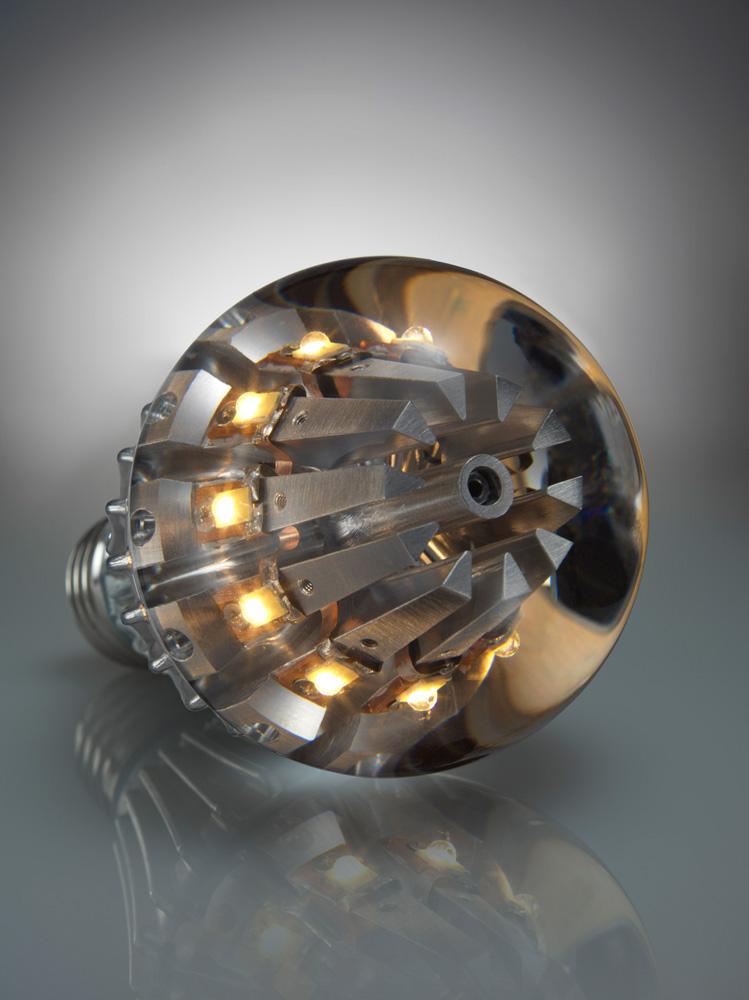Meet the World’s First 100-Watt Replacement LED Light Bulb
Back in the day 100-watt bulbs were pretty much the standard for anyone who liked their rooms brightly lit. The trouble with them was that they sucked a lot of electricity – 100-watts to be precise… not good for the planet and definitely not good for the electricity bill. Now we are sort of stuck in a void. For a while there were compact fluorescents -- they used a fraction of the electricity but were still bad news for the environment thanks to a highly toxic heavy metal that helps them do what they do. Now we’ve got LEDs: The electrical footprint has halved again; they last for a good chunk of a human lifetime. The only drawback: They direct light in a straight line, rather than scattering it in all directions like an incandescent. That makes them great for down-lights but much less useful for lamps. California’s Switch Lighting has been making incandescent replacement bulbs for some time but until now things maxed out at a 75 watt-equivalent bulb. Now, they have upped the output to 1700 lumens in a neutral white bulb; a 100-watt equivalent. They also have plans to release a warm white version in mid to late 2012. The Switch Lighting bulbs use a clever piece of technology that the company calls “City of Light.” They claim that “City of Light” allows them to produce greater brightness from fewer LEDs through the use of a cooling system. A nontoxic liquid in the bulb dome flows toward the bulb surface as it warms, allowing for even heat dissipation. The liquid is then drawn back in and the process is repeated. Mimicking the multi-directional nature of incandescent light was a little simpler. As you can see from the picture, the LEDs are mounted on metal fingers with reflectors that direct light in a similar pattern to an incandescent bulb. The Switch Lighting bulbs have a few more things going for them: they fit in conventional fixtures, are dimmable (compact fluorescents are not), and have about 20 times the lifetime of conventional bulbs while burning about a fifth of the electricity. Moreover, the company employs Cradle to Cradle principals: all of the bulb’s components can be recycled, reused or reclaimed. So what’s the catch? The company is aiming for the $20-25 price bracket for its smaller 75-watt replacement. Considering the fact that I can walk into a hardware store and get a 100-watt incandescent for a couple of dollars, that is a pretty big price hike – until you consider the lifespan and electricity savings. If it is a light that is used all of the time then it will probably pay for itself in the space of a year. Will the light be of the same quality as a regular incandescent? This author is going to go out on a limb and say probably not – but it should be close enough that people are prepared to compromise.


